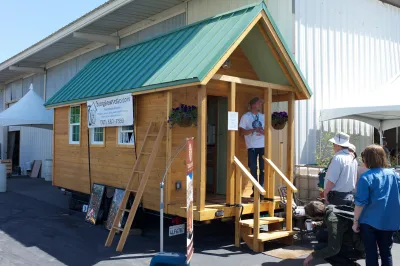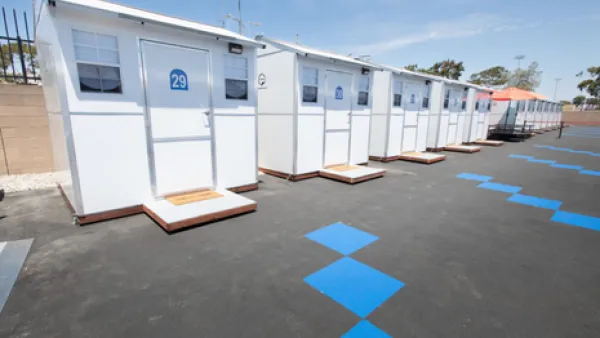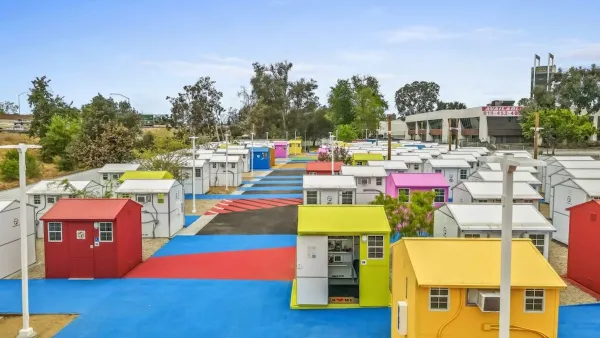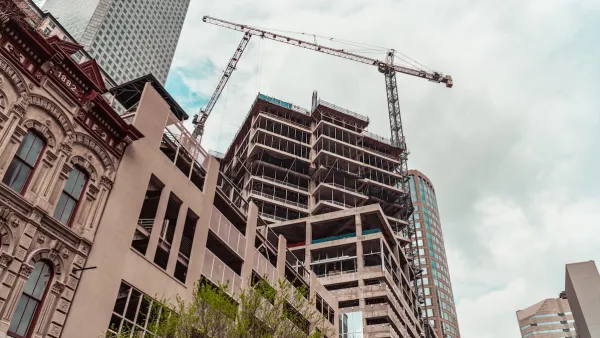Clocking in at less than 500 square feet, tiny houses are in greater and greater demand. They've been touted as a means to address affordability, inequality, homelessness, and environmental concerns. But regulatory issues are holding them back.

As the median size of new single-family homes continues to rise, there's been movement on the other end of the spectrum. A diverse segment of prospective residents (including young people, seniors, and low-income people) are interested in standalone dwellings of under 500 square feet. The problem, as Rebecca Beitsch writes, is that tiny houses are often illegal or over-regulated.
Certain areas affected by the affordability crisis have begun to change tack. "Cities such as Washington, D.C., and Fresno, California, have eased zoning and building rules to allow them, and in May California's housing department issued guidance to help builders and code enforcers know which standards they need to meet."
But the fact remains: tiny houses often fly in the face of existing code. "The difficulty has been where to place them. Those built on foundations must meet local building and zoning regulations. But many tiny houses are built off-site, sometimes without knowing where they will ultimately rest."
Note that in this context, tiny houses aren't accessory dwellings. They stand alone. "As of now, few cities allow stand-alone tiny houses. Most communities have minimum square footage requirements for single-family homes mandating that smaller dwellings be an 'accessory' to a larger, traditional house."
The good news is that while larger cities are still resisting the phenomenon (perhaps inadvertently), some small towns have made it easier to live in tiny houses.
FULL STORY: Tiny Houses Are Affordable, Energy-Efficient and Often Illegal

National Parks Layoffs Will Cause Communities to Lose Billions
Thousands of essential park workers were laid off this week, just before the busy spring break season.

Retro-silient?: America’s First “Eco-burb,” The Woodlands Turns 50
A master-planned community north of Houston offers lessons on green infrastructure and resilient design, but falls short of its founder’s lofty affordability and walkability goals.

Delivering for America Plan Will Downgrade Mail Service in at Least 49.5 Percent of Zip Codes
Republican and Democrat lawmakers criticize the plan for its disproportionate negative impact on rural communities.

Test News Post 1
This is a summary

Test News Headline 46
Test for the image on the front page.

Balancing Bombs and Butterflies: How the National Guard Protects a Rare Species
The National Guard at Fort Indiantown Gap uses GIS technology and land management strategies to balance military training with conservation efforts, ensuring the survival of the rare eastern regal fritillary butterfly.
Urban Design for Planners 1: Software Tools
This six-course series explores essential urban design concepts using open source software and equips planners with the tools they need to participate fully in the urban design process.
Planning for Universal Design
Learn the tools for implementing Universal Design in planning regulations.
EMC Planning Group, Inc.
Planetizen
Planetizen
Mpact (formerly Rail~Volution)
Great Falls Development Authority, Inc.
HUDs Office of Policy Development and Research
NYU Wagner Graduate School of Public Service





























